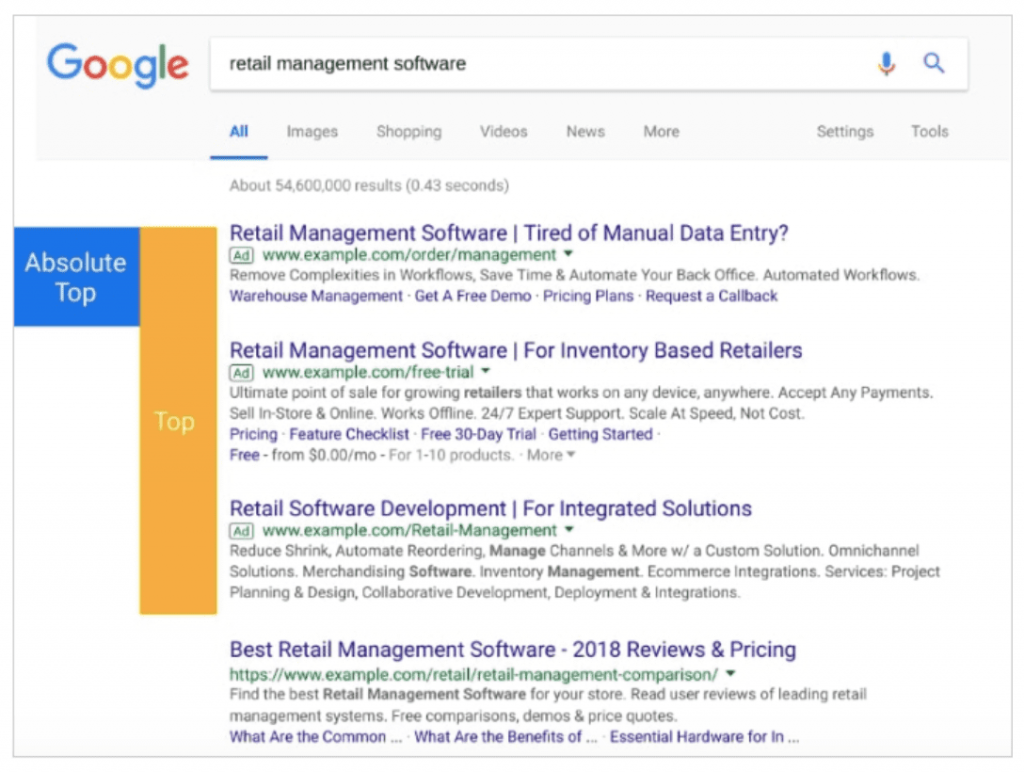In November of last year, Google rolled out Impression (Absolute Top) % and Impression (Top) %, which describe what percentage of your ads appear at the top of the page and absolute top of the page. Little did we know that these new metrics would replace Average Position.
Hindsight is a great thing and if we recall a few scenarios in the Google advertising world over recent months we should have seen it coming! The introduction of the new Google Ads interface brought about some frustration when the Average Position metric did not appear by default in the main campaign data interface! This metric was always prominent alongside old faithfuls such as clicks, impressions and cost. A few months later average position was then demoted from performance metrics to competitive metrics and alas it is now leaving us altogether come the end of September.
Google promise us the new metrics will provide us with a much clearer view of your prominence on the page than average position does.

To complement the above metrics, Google also rolled out ‘Search absolute top impression share’ (Search, abs. top IS)and ‘Search top impression share’(Search Top IS)to help us understand if there is any possibility for your ads to reach the top (anywhere above the organic search results) and absolute top (the very first ad above the organic search results) of the Search engine result pages (SERPs). Unlike average position, these metrics don’t reflect the order of your ads compared to other ads, but the actual location of your ads on the SERPs.
If you want to optimise for position, use the two metrics above as well as the following:
- Search lost absolute top impression share (budget)
- Search lost top impression share (budget)
- Search lost absolute top impression share (rank)
- Search lost top impression share (rank)
Google certainly did keep this announcement well under the radar … there wasn’t even a single tweet about it and inevitably it has sparked some debate in the industry whereby manual bidding advocates have expressed fears that this change will result in them feeling like they have lost their right arm! To be fair, with the fast-paced nature of the Google advertising industry, the average position metric has probably been one of a very few constants in the past 15 years. However, with the continuous advancements in automation and machine learning that continue to enable Google to roll out sophisticated Smart bidding options, it was only a matter of time before manual bidding – that relies heavily on average position as a bidding guide became a thing of the past.
At Grow Web the only incidence that we use manual bidding is for Brand campaigns to ensure that we dominate top positions. We tend to use Enhanced CPC as default for a limited time period only before integrating more advanced bidding strategies that focus on return. Our plan come October for brand campaigns is to opt for Target impression share bidding rather than using average position as a guide to facilitate manual bidding. This will automatically set bids to help achieve impression share goals. Placement options for the strategy depend on where you want your ads to show:
- On the absolute top of the page,
- On the top of the page,
- Anywhere on the page of Google search results.
E.g. If you choose an Impression Share target of 65% on the absolute top of page, Google will automatically set your bids to achieve this and don’t fear – max. CPC bid limits can be set to enable us to maintain control!
In summary, we aren’t fretting too much over the disappearance of Average Position and as usual Google have it all covered with the suite of new metrics that can be used as guide to optimise location and prominence on the SERPs.
